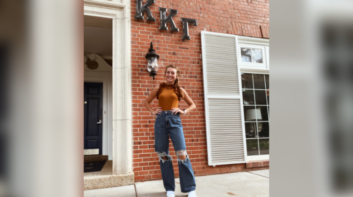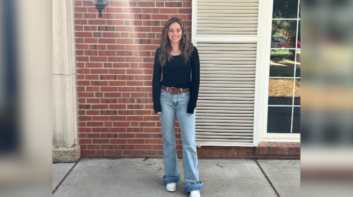Melissa Espinoza teaches kindergarten at a classical charter school in northern Idaho, but that wasn’t always the case. For 14 years, Espinoza taught in the California public school system. The difference between the two education environments, she said, is “night and day.”
Espinoza began her teaching career a few years before the Supreme Court ruled that public school teachers had the right to opt out of union membership in the landmark Janus vs. AFSCME case. Therefore, she had no choice but to join the California Teachers Association.
“Initially, you’re just excited to get a job,” she said of her first years as a teacher. “I was only 21, a new teacher at the time, and I just thought, ‘Well, I’ll go along with it.’”
Over time, however, Espinoza said the realities of union membership started to bother her.
“I had dues that I paid every month—probably around $100—so it wasn’t a huge chunk of my paycheck, but I was still thinking, ‘Okay, this money is being taken out to group me in with the California Teachers Association,’” she said. “That included their political ideology, which I didn’t have any say in.”
According to SFGate, the California Teachers Association heavily supports progressive causes, donating over $2 million to “almost exclusively” Democrat political candidates between 2018 and 2021. Their spending reflects their priorities—on the California Teachers Association’s website, “Immigration Reform” is listed above classroom size on their list of important issues.
This is just one example demonstrating why teachers feel that their unions are willing to sacrifice students’ educational outcomes to achieve political goals. Another example, one that Espinoza experienced, is mandatory teacher strikes.
“There were a few times in my teaching career where [the union] was going for more money for teachers, and we had to go on strike,” she said. “It didn’t matter if you didn’t agree, because you’re part of the union. You must picket, you must strike, you must do whatever the union decides.”
In addition to depriving students of valuable classroom time, Espinoza said the union model “bred mediocrity.”
“After two years, if you’re part of the union, you’re tenured, and your job is protected,” she said. “I remember there was a teacher who called in sick every single Friday during football season, and that was backed by the union. So, you can make choices that are not in the best interest of your school, your classroom, your kids—because you’re tenured.”
After the Janus decision gave teachers the right to opt out of their union, Espinoza said the California Teachers Association manipulated teachers to remain a part of their union by implying they would lose their job security if they left.
“I thought, ‘Well, I’m a moral person and I’m not going to do anything that would put me in jeopardy of needing union backing for whatever reason,’” she said. “So I felt comfortable leaving.”
According to Espinoza, what finally drove her to leave in 2018 was the growing influence of political ideology within her union, which she observed towards the end of her teaching career in California.
“I didn’t want my $100 going to things that, in my opinion, the California Teachers Association shouldn’t have a voice in anyways,” she said. “Our job is to educate kids—why are we talking about abortion and all of these things that have nothing to do with teaching kindergarten?”
Now that Espinoza has left California—and her teachers union—behind, she said her passion for teaching has only grown.
“I love working with kids,” she said. “They keep you on your toes—kindergarteners, especially. People think we just finger-paint all day, but at the end of the day I can’t peel myself off of my couch!”
In addition to the freedom she gained after leaving her union, Espinoza said the biggest difference between teaching at a public school and teaching at a charter school is the behavior of her students.
“[My charter school in Idaho] is essentially technology-free, and this is the first time in 16 years I haven’t had devices in my kindergarten classroom,” she said. “Their attention spans are unlike any other year—they’re learning to talk to each other, learning to share, learning to use their words—it’s not just sitting on a computer.”
The freedom she found outside the union model, she said, inspired her to speak openly about her decision to leave.
“I’m not in California anymore, but if I didn’t have my job [at the charter school], I might not have wanted to say anything,” she said. “People are supposed to have different views. The facilitators of the classroom teaching environment should not be told that they all have to think the same way.”










